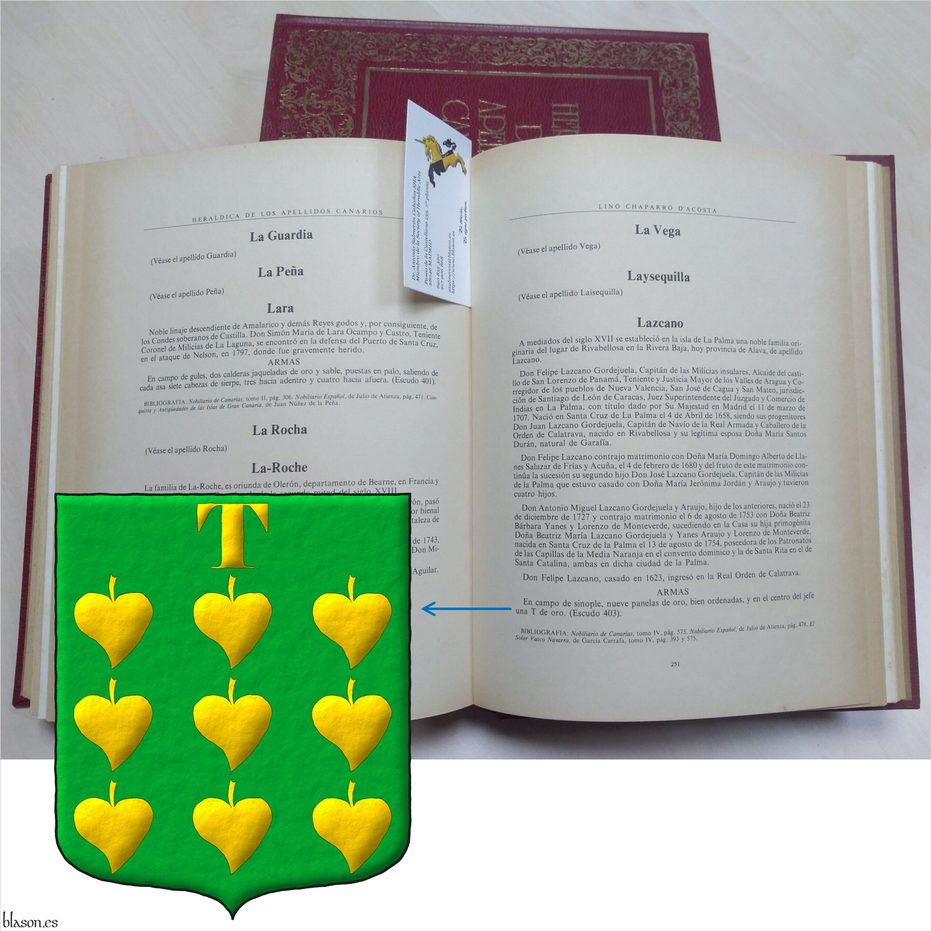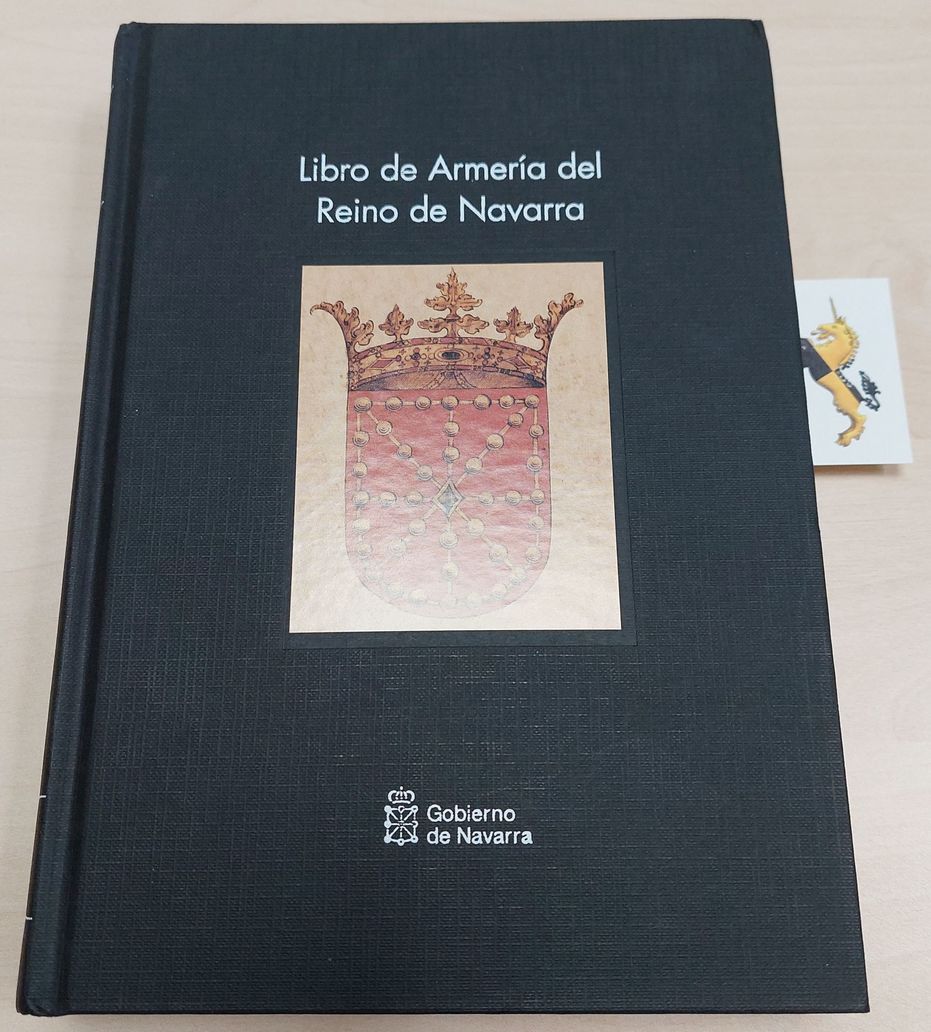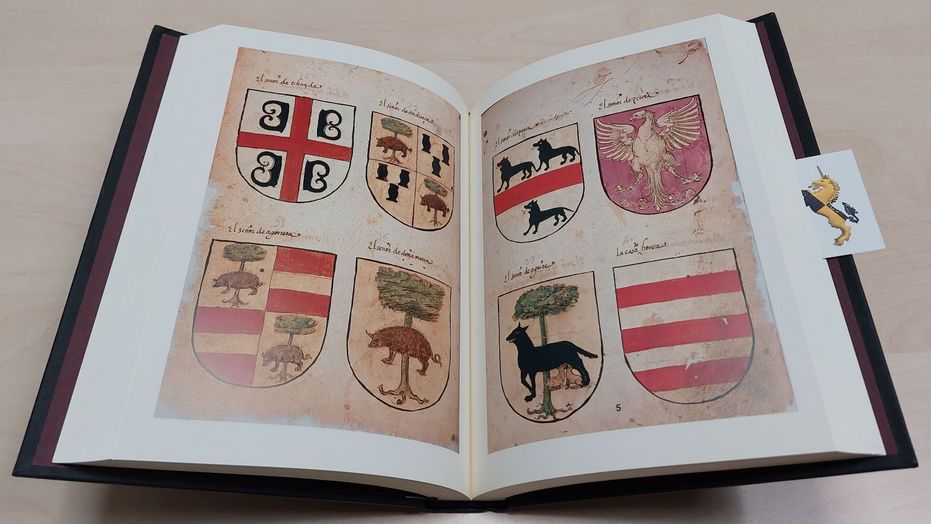Poplar leaf


Noblemen of Navarre
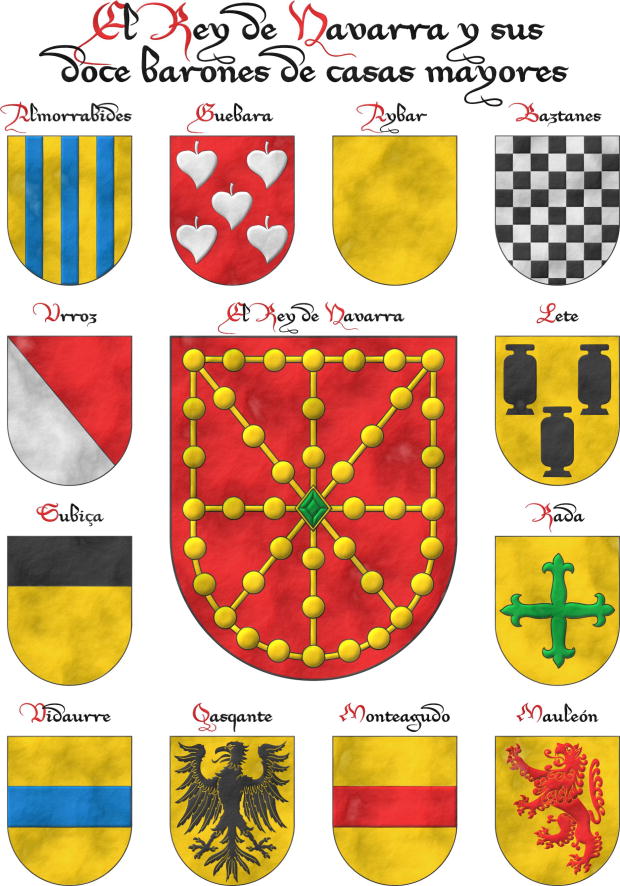
The King of Navarre, at the time of his new and solemn coronation, is raised and lifted up as King by the hands of twelve barons of the greatest and oldest houses of the said Kingdom, and these are the twelve Noblemen who are named on the other side, with their blazons and coats of arms.
Interpretation and composition of 13 coats of arms that I have created with a parchment-like finish.
A free interpretation, for example, without the central crown over the arms of Navarre, with a different title, written «Navarra» and not «Nabarra», etc., based on the principal plate of [Bosque, J. del; 1540; folio 1 of the numbering of 1613] and with texts taken from the transcription by [Martinena Ruiz, J. J.; 1982; pages 122 and 123].
«Ricohombre», written together, currently means «title that formerly belonged to the highest nobility of Spain», [Real Academia Española; 2001].
Its plural «ricoshombres» is the most commonly used form, but «ricohombres» is also correct and used; and in [Bosque, J. del; 1540] it is written separately, and «honbre» with an «n» before the «b», that is, «ricos honbres».
Blazon keywords: Without divisions, Party per bend, Azure, Gules, Or, Argent, Sable, Vert, Eagle, Chequey, Cross flory, Cross couped, Fess, Chief, Lion, Pale, Poplar leaf, Clay pot and Rampant.
Style keywords: Semi-circular and Old parchment.
Classification: Interpreted and Kingdom of Navarre.
Bearer: Noblemen of Navarre.


Guebara of Navarre
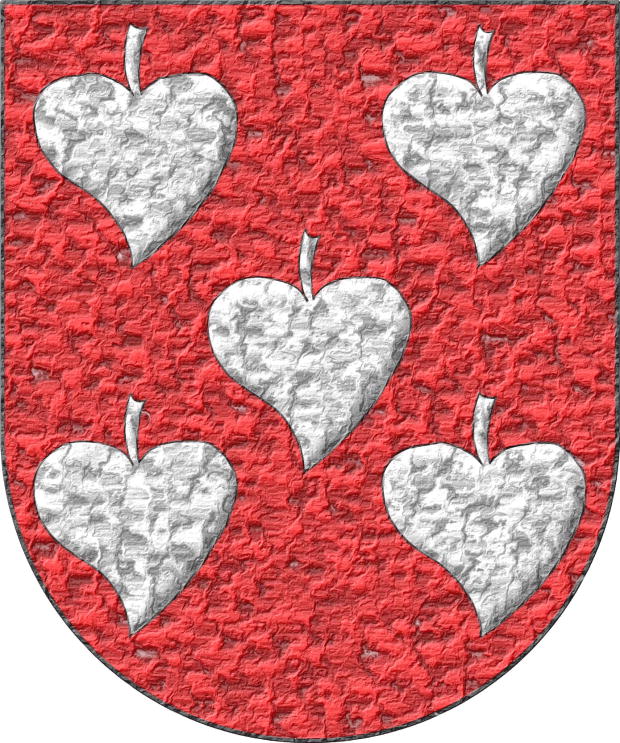
Of the twelve lineages of Noblemen, it is the second, descendant of Álava, the very ancient and powerful one, in which some served under Navarre, and others under the kings of Castile; they bear for arms and insignia, on a field Gules, which is red, five poplar-leaves (panelas) Argent, in the form and design in which this shield is painted.
Gules, five Poplar-leaves Argent, inverted.
Escudo de gules, cinco panelas de plata.
Coat of arms interpreted with: a semicircular (round) base; the field in flat Or; the pales outlined in Sable and illuminated in Azure enamel; and finished in highly-hammered metal.
Interpretation based on the second coat of arms of the «ricoshombres» of Navarre from [Bosque, J. del; 1540; folio 1 of the numbering of 1613] and the accompanying text is from the transcription made in [Martinena Ruiz, J. J.; 1982; pages 122 and 123].
The «panela» is a figure typical of Spanish heraldry [Valero de Bernabé, L.; 2007; page 11]. It is a leaf shaped like a heart with its stalk pointing upward. It could be a leaf of a tree such as, for example, the poplar, although there is no certainty that it is specifically that tree.
With first appearances prior to heraldry on Hispano-Roman tombstones, the «panela» is of Alavese origin, [Menéndez Pidal de Navascués, F.; 1985; page 474], spreading through the Basque-Navarrese region and from there throughout Spain, with the peculiar name «panela», which was initially called «pannella», [Valverde Ogallar, P. B.; 2001; page 532] derived from «pan», [Real Academia Española; 2001].
In the heraldry of other countries, leaves from different trees are used as heraldic symbols, but usually with the stalk pointing downward; therefore I transcribe in this blazon «panelas» ~ «Poplar-leaves, inverted».
[Menéndez Pidal de Navascués, F.; 1985; page 474] states that the «panela» is a natural figure equivalent to the linden leaf in German heraldry, with the stalk downward, and to the water-lily leaf in French heraldry, with the stalk upward; but since these are such different plants, I do not find it suitable to use linden, and even less water-lily, in the English transcription of this Navarrese blazon.
Under the title «Surname of Guebara» it can be consulted in [Vega, P. J. de; 1702; folio 2 of the manuscript].
Blazon keywords: Without divisions, Gules, Poplar leaf and Argent.
Style keywords: Semi-circular, Illuminated, Outlined in sable and Hard metal.
Classification: Interpreted, Personal and Kingdom of Navarre.
Bearer: Guebara of Navarre.


Lazcano, lineage of the Canary Islands
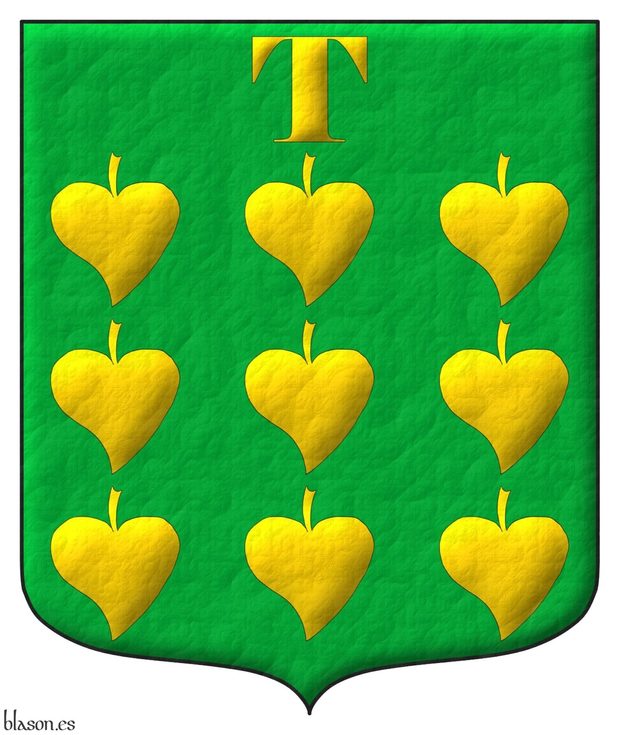
Blazon of the lineage Lazcano in the Canary Islands.
Vert, nine Poplar leaves ordered, in chief a «T» letter Or.
Illuminated and leather finishing.
It can be consulted at [Chaparro D'Acosta L.; 1979; página 251].
Blazon keywords: Without divisions, Vert, Letter, Poplar leaf, Or and Nine.
Style keywords: Leather, Outlined in sable and Illuminated.
Classification: Interpreted.


![Ver [Chaparro D'Acosta L.; 1979] en referencias bibliográficas. Libro abierto, hojas de plata, filo de oro, guardas de gules, tapas de sable.](../css/Libro.Bibliografia.png)
Chaparro D'Acosta L.; 1979
Lino Chaparro D'Acosta, «Heráldica de los Apellidos Canarios», foreword by Vicente de Cadenas y Vicent, 2 volumes, Volume I from A to L, 285 surnames, 293 pages, Volume II from M to Z and a heraldic dictionary, 387 surnames, 439 pages, edited by Estudios Tecnicos del Blason, ISBN of the complete work 84-300-2000-4, ISBN of Volume I 84-300-1989-8, ISBN of Volume I II 84-300-418010-8, Las Palmas de Gran Canaria, 1979.
Bibliographical reference of century XX.
Classification: Black and white with color plates and Castilian language.
The author is Chaparro D'Acosta, Lino.
The following article cites this bibliographic reference:


![Ver [Martinena Ruiz, J. J.; Menéndez Pidal de Navascués, F.; 2001] en referencias bibliográficas. Libro abierto, hojas de plata, filo de oro, guardas de gules, tapas de sable.](../css/Libro.Bibliografia.png)
Martinena Ruiz, J. J.; Menéndez Pidal de Navascués, F.; 2001
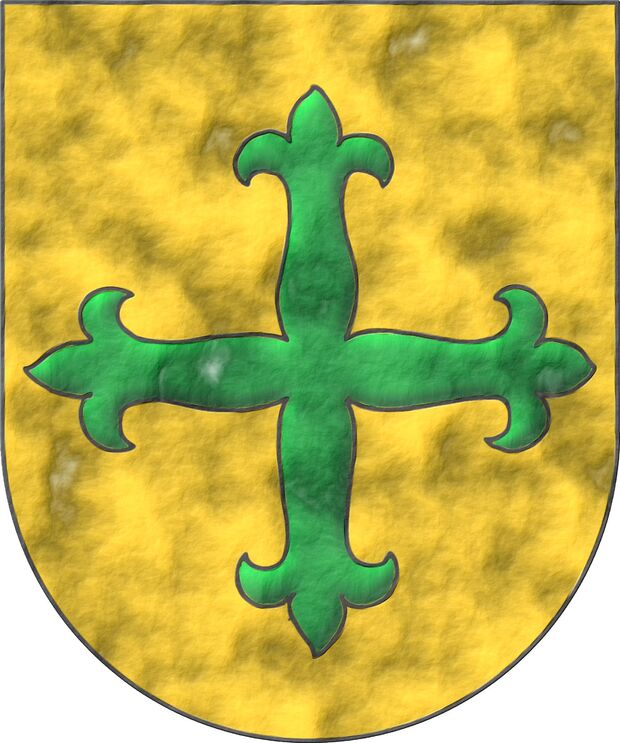
Juan José Martinena Ruiz and Faustino Menéndez Pidal de Navascués, «Book of Armory of the Kingdom of Navarra», Published by the Institución Príncipe de Viana, Directorate-General for Culture, Government of Navarra, 484 pages, ISBN-13 978-84-235-2166-1, ISBN-10 84-235-2166-4, Pamplona, 2001.
Reproduction and transcription of the manuscript armorial [Bosque, J. del; 1540], that is, the copy of the «Book of Armory of the Kingdom of Navarra», preserved in the General Archive of Navarra.
The coat of arms accompanying this bibliographic reference is that of Rada de Navarra following Juan del Bosque.
Both authors had already written and published, separately, about the armorial [Bosque, J. del; 1540], an example of the first is [Martinena Ruiz, J. J.; 1982] and an example of the second is [Menéndez Pidal de Navascués, F.; 1974].
Bibliographical reference of century XXI.
Classification: De bibliotheca.
The 2 authors are Martinena Ruiz, Juan José and Menéndez Pidal de Navascués, Faustino.
Bibliographic reference mentioned in the following articles:
External resources:


![Ver [Menéndez Pidal de Navascués, F.; 1985] en referencias bibliográficas. Libro abierto, hojas de plata, filo de oro, guardas de gules, tapas de sable.](../css/Libro.Bibliografia.png)
Menéndez Pidal de Navascués, F.; 1985
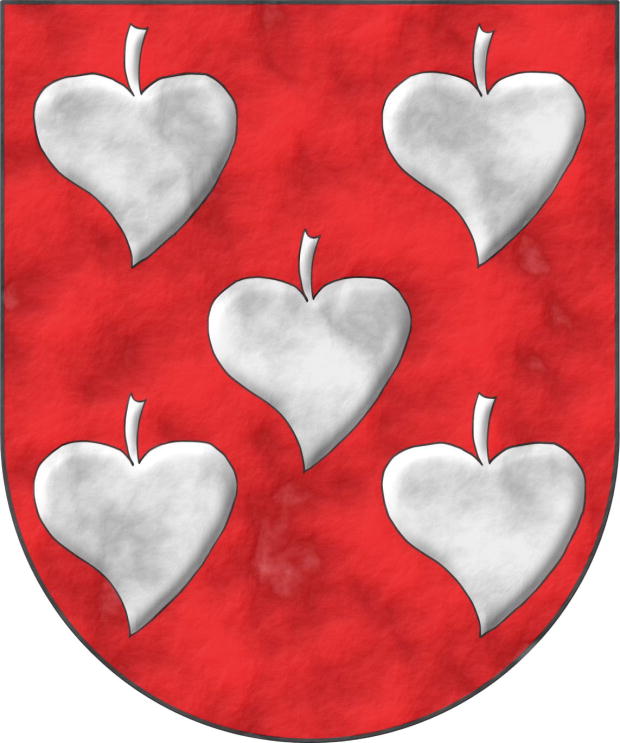
Faustino Menéndez Pidal de Navascués, «Rare and Ambiguous Charges of Spanish Heraldry», Revista Hidalguía, issue 190 and 191, Ediciones Hidalguía, Madrid, 1985.
The coat of arms with squares accompanying this bibliographic reference is that of Guebara de Navarra, an interpretation based on that by [Bosque, J. del; 1540]. I chose this coat of arms because Faustino Menéndez Pidal writes precisely about it and about the squares as a figure typical of Spanish heraldry, for example, he does so on pages 474 and 475 of this article.
Bibliographical reference of century XX.
Author: Menéndez Pidal de Navascués, Faustino.
The following article cites this bibliographic reference:
External resource:
Internal resources: MenendezPidalDeNavascuesF1985.MueblesRarosHeraldicaEspañola.pdf.
-
Language
-
Categories of heraldry
-
Divisions of the field
- Without divisions
- Party per pale
- Party per fess
- Party per bend
- Party per bend sinister
- Tierce
- Tierce sinister
- Tierced per fess
- Tierced per bend
- Tierced pallwise inverted
- Quarterly
- Quarterly per saltire
- Gyronny
- Party per fess, the chief per pale
- Party per pale, the sinister per fess
- Party per fess, the base per pale
- Party per pale, the dexter per fess
- Chapé
- Chaussé
- Party per chevron
- Enté en point
- Flanched
-
Metals
-
Colours
-
Furs
-
Other tinctures
-
Ordinaries and sub-ordinaries
-
Diminutives of the ordinaries
-
Other charges
-
Charges from Nature
Water, Eagle, Bald eagle, Eagle claw, Dorsal fin, Tail fin, Two hands clasped, Lark, Tree, Trunk, Rainbow, Atom, Barbel, Acorn, Bighorn sheep, Arm, Owl, Vulture, Horse, Head, Goat, Camellia, Thistle, Merino ram, Kapok tree, Stag, Doe, Crescent, Increscent, Chrysanthemum, Tail, Tail addorsed, Ermine spot, Hummingbird, Snowflake, Heart, Roe deer, Neck, Roe deers' attires, Raven, Dolphin, Diamond, Tooth, Elephant, Emerald, Starling, Mullet, Mullet of four points, Star of David, Estoile, Male figure, Fleur de lis, Flower, Cornflower, Dogwood flower, Lotus flower, Hop cone, Bluebonnet, Puffin, Ash, Rooster, Claw, Talon, Goose, Heron, Seagull, Pomegranate, Sunflower, Swallow-tail, Falcon, Leaf, Boar, Goldfinch, Laurel, Barn owl, Lion, Lioness, Lion passant, Leopard, Lion rampant guardant, Lynx, Lily, Madonna lily, Flame, Wolf, She-wolf, Parrot, Moon, Hand, Apple, Apple tree, Martlet, Wing, Two wings in vol, Covert, Blackbird, Mount, Trimount, Fly, Wrist, Elm, Olive tree, Orbital, Bear, Palm frond, Palm tree, Dove, Poplar leaf, Panther, Jaguar, Vine, Paw, Forepaw, Foot (palmiped), Foreleg, Peacock, Chest, Pelican, Pelican in her piety, Dog, Brach hound, Warren hound, Fish, Hoof, Beak, Quill, Cinquefoil, Quetzal, Branch, Sprig, Frog, Shamrock, Caboshed, Oak, Holm oak, Rose, Double rose, Savage, Serpent, Plough of Ursa Major, Sun, Sun in splendour, Ray of the sun, Lightning flash, Stem, Badger, Tyger, Linden, Wheat, Wheat spike, Bull, Tulip, Udder, Escallop and Fox.
-
Artificial charges
Halberd, Plough share, Ace of spades, Anchor, Cyclamor, Torch, Bow, Arch, Harp, Non-classic artifact, Winnowing fan, Crozier, Conductor's baton, Pair of scales, Ship, Norman ship, Beret, Grenade, Ecclesiastical cap, Arm vambraced, Knight, Chain, Covered cup, Monstrance, Bell, Bell tower, Cannon dismounted, Carbuncle, Castle, Ribbon, Clarion, Nail, Cord, Dagger, Key ward, Turret, With a turret, Armillary sphere, Sword, Federschwert, Sabre, Parchment, Scroll, Arrow, Club, Garb, Sheaf of tobacco, Scythe, Gauntlet, Axe, Buckle, Galician granary, Polish winged hussar, Church, Oil lamp, Spear, Spear's head, Fleam, Letter, Book, Open book, Closed book, Bookmark, Page, Line, Lantern, Key, Four crescents joined millsailwise, Hammer, Menorah, Mortar, Pestle, Number, Knot, Celtic Trinity knot, Water-bouget, Comb, Piano, Millstone, Millrind, Millwheel, Clay pot, Bridge, Cuffed, Hourglass, Chess rooks, Compass rose, Rosette of acanthus leaves, Mullet of six points pierced, Broken, Portcullis, Wheel, Wagon-wheel, Symbol, Sackbut, Drum, Geometric solid, Tetrahedron, Tower, Trident, Trumpet, Double vajra and Anvil.
-
Immaterial charges
Angel, Archangel, Heart enflamed, Sacred Heart of Jesus, Paschal lamb, Dragon, Wyvern, Phoenix, Garuda, Griffin, Sea-griffin, Winged hand, Our Lady of Mercy, Pegasus, Saint George, Mermaid, Trinity, Triton, Golden fleece, Unicorn and Ouroboros.
-
External elements
-
Heraldic creations
-
References
-
Formats
-
Keywords on this page
Chequey, Old parchment, Azure, Bibliography, Cross flory, Cross couped, De bibliotheca, Outlined in sable, Black and white with color plates, Fess, Photographic, Personal, Guebara of Navarre, Gules, Illuminated, Interpreted, Chief, Castilian language, Letter, Lion, Lineage, Semi-circular, Hard metal, Noblemen of Navarre, Nine, Or, Pale, Poplar leaf, Leather, Argent, Without divisions, Clay pot, Rampant, Kingdom of Navarre, Sable, Century XX, Century XXI, Vert, Party per bend and Eagle.
